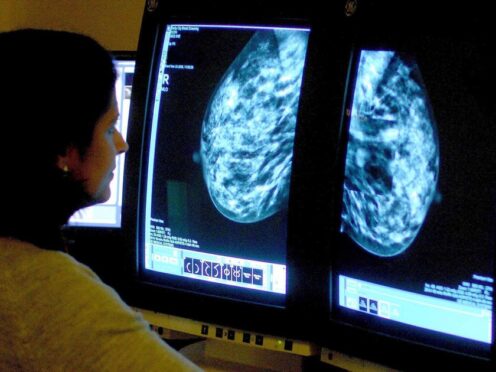
Women from the poorest communities are being “overlooked” on breast cancer testing despite screening figures reaching their highest ever level in a three-year period, Scottish Labour has said.
More than three quarters of women in Scotland were tested for breast cancer between 2020 and 2023, figures published by Public Health Scotland showed.
The 539,575 women screened out of 711,189 invited a record figure, however official statistics showed an 18.6 percentage point gap between the most and least deprived communities.
Women between the ages of 50 and 70 from the most deprived communities were less likely to attend their routine breast screening appointments, with a 64.2% screening rate compared to 82.8% in the most affluent areas.
While the gap between the most and least deprived remains significantly high, it is a slight decrease to the previous three-year period where there was a difference of 18.8 percentage points.
Overall uptake for breast screenings increased from 74.5% in the 2019-2022 period and the pre-pandemic (2017-20) levels of 72.2%.
Figures also showed that all individual NHS health boards met the acceptable uptake standard of 70% in the most recent three-year period but women’s health minister Jenni Minto said “more work” was needed to reach the achievable 80% target.
Scottish Labour’s health spokeswoman Carol Mochan said: “These statistics lay bare the stark and persistent levels of health inequality that exist today under the SNP.
“It is simply wrong that those from the most deprived backgrounds are less likely to access life-saving screening – we need targeted action to ensure these women are reached before lives are lost.
“We cannot have thousands of women overlooked and put in danger due to their socioeconomic position.”
Tess White, deputy health spokeswoman for the Scottish Tories, said: “While any uptake in the breast cancer screening programme is to be welcomed, there is no room for complacency by SNP ministers.
“It is deeply alarming that fewer than one in three women from our most deprived communities attended screenings, which risks breast cancer cases going undetected.”
Women’s health minister Jenni Minto said: “I am pleased that more women are attending breast screening appointments and that boards have individually met their target for a second year in a row.
“However, there is more work to be done to reach the achievable target of 80% and to encourage people from more deprived areas to attend their appointments.
“We will continue to work with health boards to encourage more women to participate in breast screening and address any barriers they may face in doing so.”

Enjoy the convenience of having The Sunday Post delivered as a digital ePaper straight to your smartphone, tablet or computer.
Subscribe for only £5.49 a month and enjoy all the benefits of the printed paper as a digital replica.
Subscribe